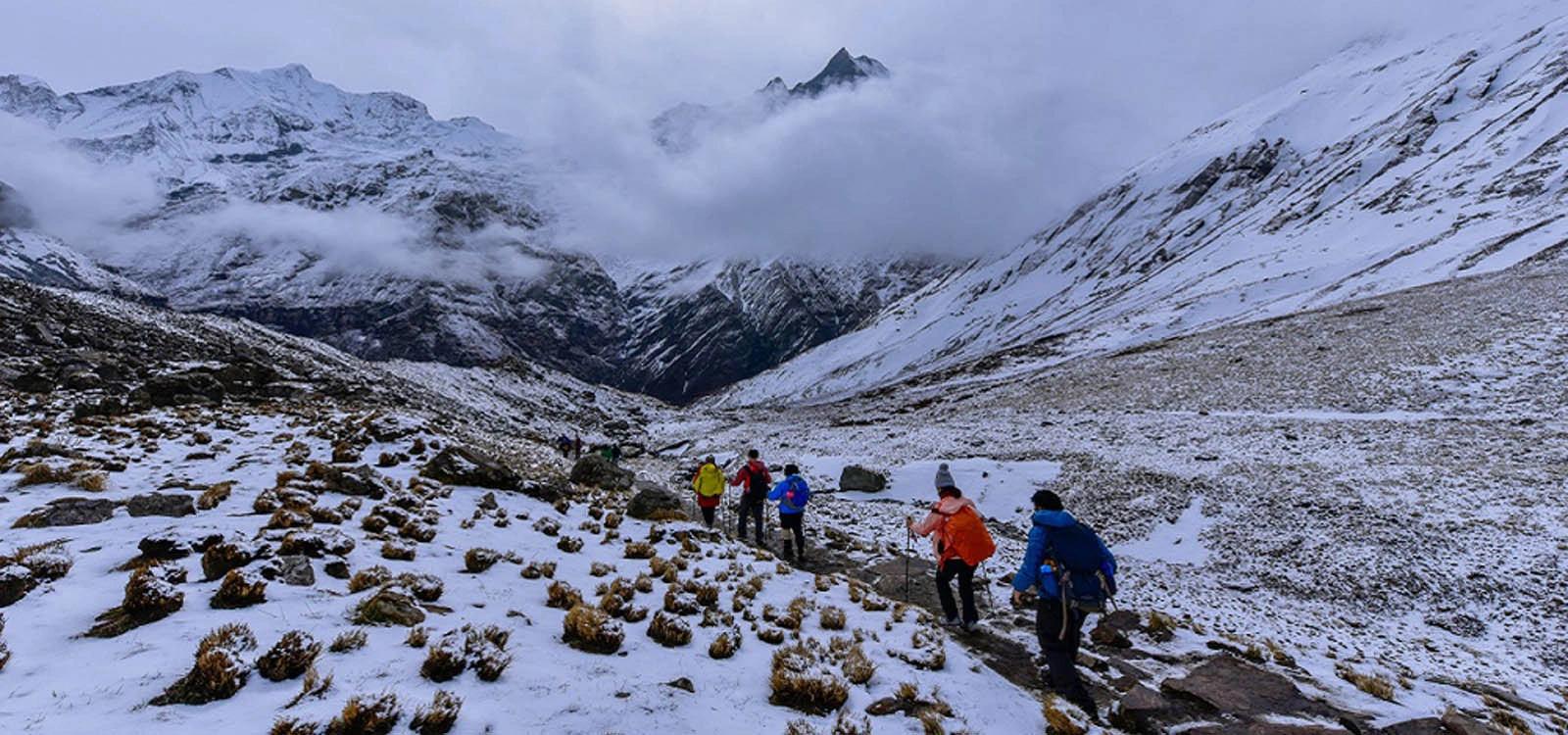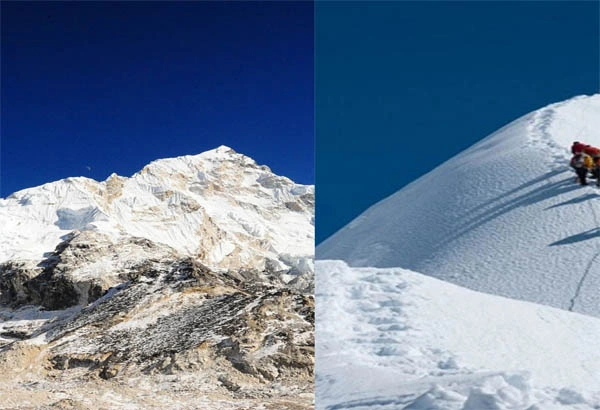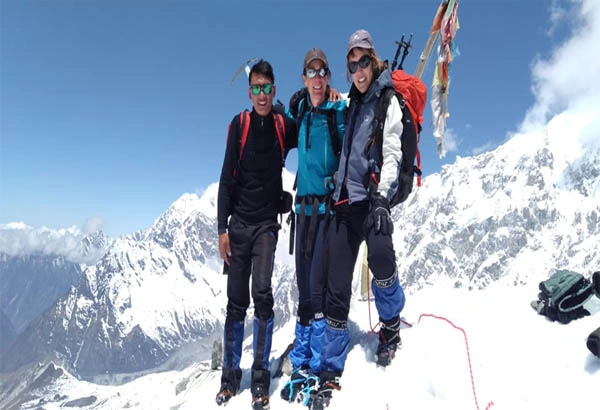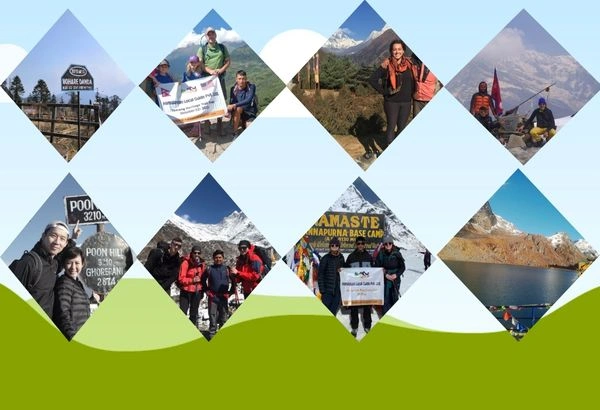The best trekking to Annapurna Base Camp is one of the most beautiful Himalayas valleys in Nepal. More travelers/trekkers come to explore the beautiful nature, typical villages, and unique local culture, and express their lover’s adventure on this astonishing experience. This Annapurna Base Camp journey is a Moderate route than Everest Base Camp Trek, the trip falls under the most respected path in the, where you can get to contact the world's 10th most elevated mountain Mount Annapurna.
Annapurna Base Camp Trek offers to visit the miraculous viewpoint of Poon Hill, which is one of the most famous short and sweet routes in the Nepal Himalayas region. Annapurna journey is one of best Himalayas parts loaded with regular marvels, and over 70% of all out outsiders select traveling to Annapurna Base Camp after Everest Trek.
Annapurna Base Camp Trekking through various topography and culture faultlessly mixed with rich mountain lookouts, terraced fields, Gurung townlets, and a huge sort of foliage and fauna. Mt. Annapurna I is the 10th highest mountain in the world with a tallness of 8091M and the excursion towards the foundation of this respectable mountain is one of the most famous excursions on the planet. Here we give the best Annapurna Base Camp Trek justification behind you which should know before the trip.
Annapurna Base Camp Trek Difficulty:
Annapurna Base Camp Trek is one of the short journeying trails in Nepal which drives you from Kathmandu city to the lovely part of Mount Annapurna. Annapurna Trekking is less difficult than Everest Base Camp Trek; however, you need great wellbeing, actual wellness, and certainty. You will begin your trip from sub-tropical to tundra climatic zones where you pass the six diverse climatic zones. This Trek is ideally suited for those adventurers who need to walk at high elevations and in an incredible state of being. Annapurna region journeys are moderate to exhausting, you need to get more than 4,000 meters high elevation.
Supernatural Landscape:
Annapurna Base Camp Trek is one rich region of scenes. The wildlife glasshouse gives a steadily changing compliance of topographies. Its huge practice geology at the lower part of the honorable mountain sees thick foliage of rhododendrons, bamboos, terraced fields, Gurung town lets, and pleasurable foliage and fauna. During the journey, you will get to see astonishing scenes with the magnificence of nature.
TIMS and Permits:
You'll require a TIM's card (trekking Information Management System) and an entry permit for your excursion to Annapurna Base Camp. You can get it from NTB (Nepal Tourism Board) in Kathmandu and Pokhara. TIM's card will bring you around 2000 NPR and 2500 NRS for the permit.
Safe the Annapurna Base Camp Trek:
During the journey, you will be the best trained and experienced guide, who came from the high area of the Himalayans. Our local guide will carry all necessary paper and fundamental equipment with a medical aid pack. Just in case, assuming our customers come to a few crisis issues of mountain sickness and accident then we promptly send a rescue helicopter. Any region of the Himalayan journeys will demand great well-being and wellness, so make healthy your body before joining the excursion.
Local Culture and Traditions:
Annapurna Base Camp Trek is as significant of an otherworldly outing as a venturesome bone. You can appreciate and experience unique ethnic Gurung and Magar social orders at bitsy arrangements and regions generally through the outing. As you stomp along the greenway altered with rhododendron blossom, you can moreover run over Thakali and Loba individuals. They for the most part live in the lower areas of the Annapurna Himalayas. Passing little Chortens and gumbas, the passing path is a tranquil outing of intriguing traditions that transports you to later. Climbing through spreads and terraced rice fields is moreover a run-of-the-mill sight while voyaging. Thick pine and bamboo woodlands make the experience a departure from the clamoring Civic communities.
Related Packages:
Accommodations during the Trek:
The accommodations during the trip, all accommodations are on the basic twin and sharing. Our local trekking guide team leader will be managing the beautiful common room. If possible he will try to manage the best room with attached bathrooms. About the attached bathrooms it’s very difficult to get in the Himalayas regions, most of the mountain areas have just a common room and we must share the toilet and bathroom with other clients. The single rooms are available in the lower altitude Himalayas regions. But it is not possible to get a single room in the higher elevations; you must share with other people.
Meals:
As we as during the Trek, all kinds of meals will be provided in the Annapurna region, you can take pleasure in Nepalese traditional foods likes: Nepali Dal Bhat and many typical foods are available in this region. Also, they have special menus; you can choose the many different kinds of European, Italian, Chinese, and Indian foods available during the journey.
Breakfast:
You can choose by the menu of your breakfast: options such as French toast with (jam, Honey, and Butter), muesli, Oatmeal, Corn Flakes, cereal, hash browns, any style of eggs you would like, Gurung Bread, Tibetan Bread with (jam, honey, and Pea abutter), pancake, puffy, and round and tsampa porridge and chapatti with any kinds of Tea.
Lunch:
Lunchtime; you will have the opportunity to special delicious food likes: Thukpa, vegetable Noodle Soup, Chicken Noodle soup, mushroom soup, and fried veg. cheese potatoes, veg eggs fried noodles, eggs. Vegetable fried macaroni, Momo (dumplings), eggs. Veg fried rice, Nepali Dal Bhat set (Dal Bhat power 24 hours), and many much more items.
Dinner:
You can choose by the menu: a menu that’s similar to the options you had at lunch break time: Stews, Pizza, Thukpa, Fried Noodles, Noodle soup, macaroni, fried potatoes, fried rice, momo (dumplings), spring roll, Dal Bhat set, spaghetti and many much more items, etc.
Safe Drinking water:
In the Annapurna region, you will get normal water from the Tap or river. For this water you must use purification medicine or a filtering hand pump, also you get boiled and a bottle of water is available at lodges. While you hiking in the mountains regions, you should drink normally 4 to 5 liters per day.
AMS – Acute Mountain Sickness:
Acute Mountains Sickness (AMS) or altitude sickness is one of the risks even when traveling at the high an elevation. The region following getting AMS is while the body doesn’t change in the lower altitude, and the result can be boring. So, it is most important to take appropriate measures on the time. Ahead at an altitude with a constant pace and good acclimatization days, will be helping reduce the chances of getting AMS.
Likewise, you also have to keep yourself hydrated during the trip. As a result, drink very much water and keep away from alcoholic drinks as it dehydrates the body. If you are planning to travel on the local adventure journey of Nepal then do remain about things in your mind.
Note: if you have got any symptoms of altitude sickness then keep contacting with your local trekking guide our guide is trained and he knows how to solve them (AMS) Acute mountains sickness.
The Main Symptoms of altitude sickness:
- Headache
- Nausea
- Vomiting
- Fatigue
- Difficulty sleeping
- Dizziness
- Lightheadedness
- Loss of appetite
- Difficult to breath
Preventive measures:
- Do not drink alcoholic beverages in the high an elevation
- Keep yourself hydrated
- Do the Acclimatize from low altitude to high altitude and back to sleep on the low altitude.
- Do not achieve more than 500 meters in a day
- Do not walk very fast at a high altitude.
- Walk slowly at the high elevations and keep walking.
- Do not walk alone on the way.
- Inform your guide as soon as if got any high altitude sickness.
- Drink very much boiled water and hot tea.
- Take garlic soup and Ginger tea, it is high altitude sickness medicine.




